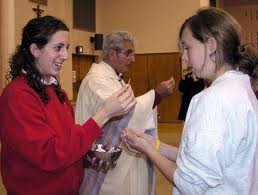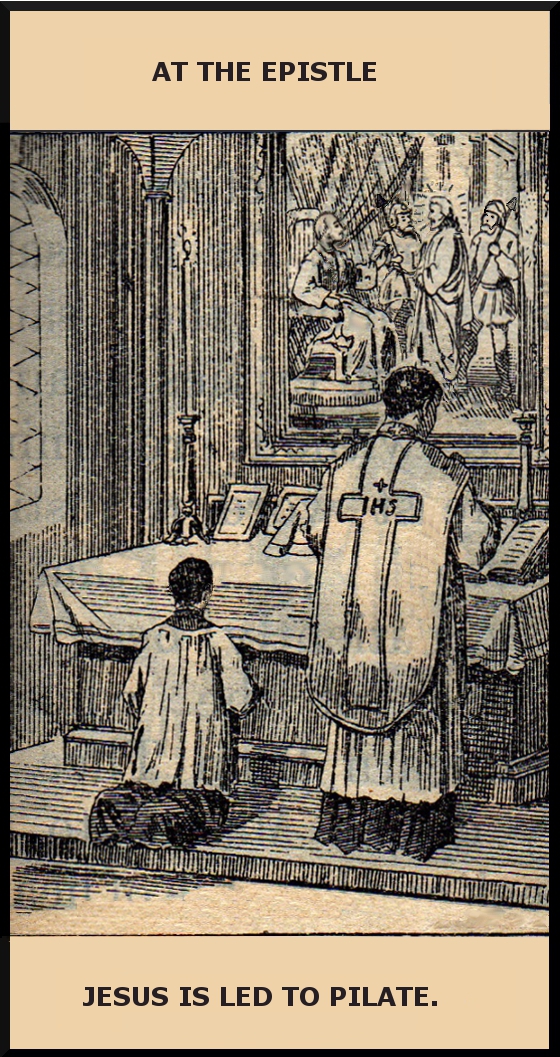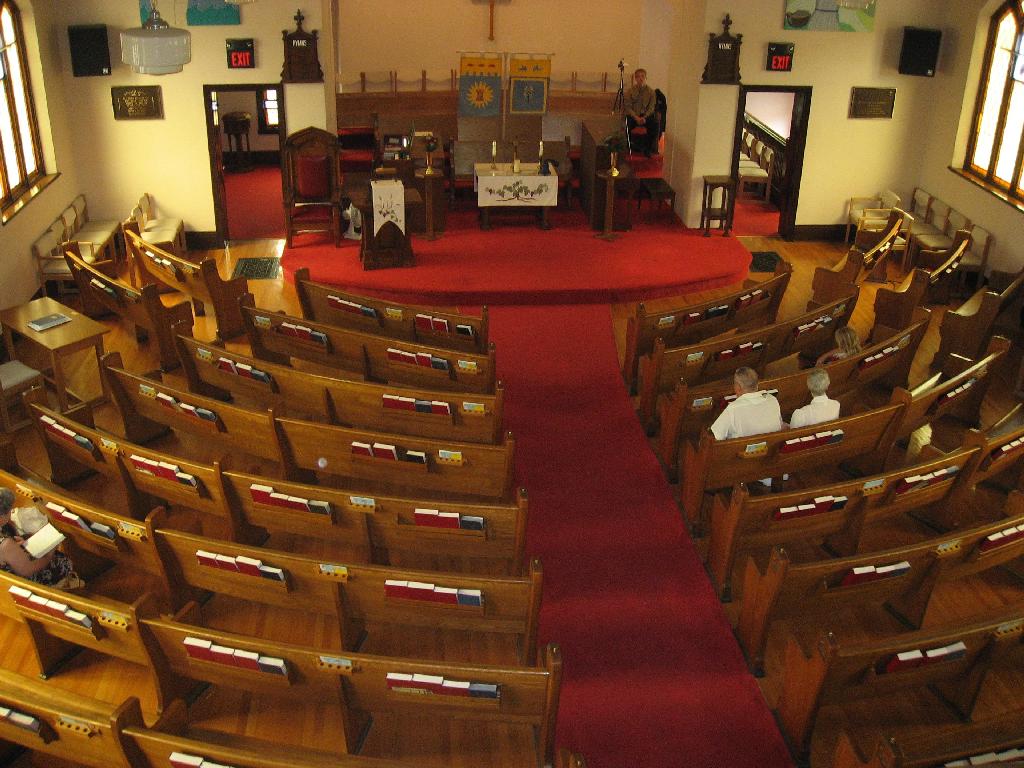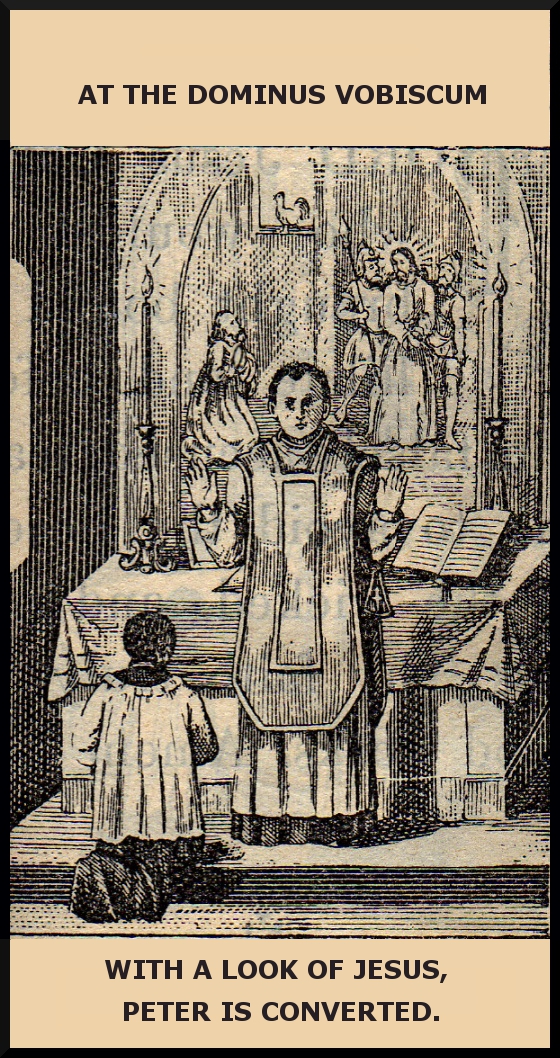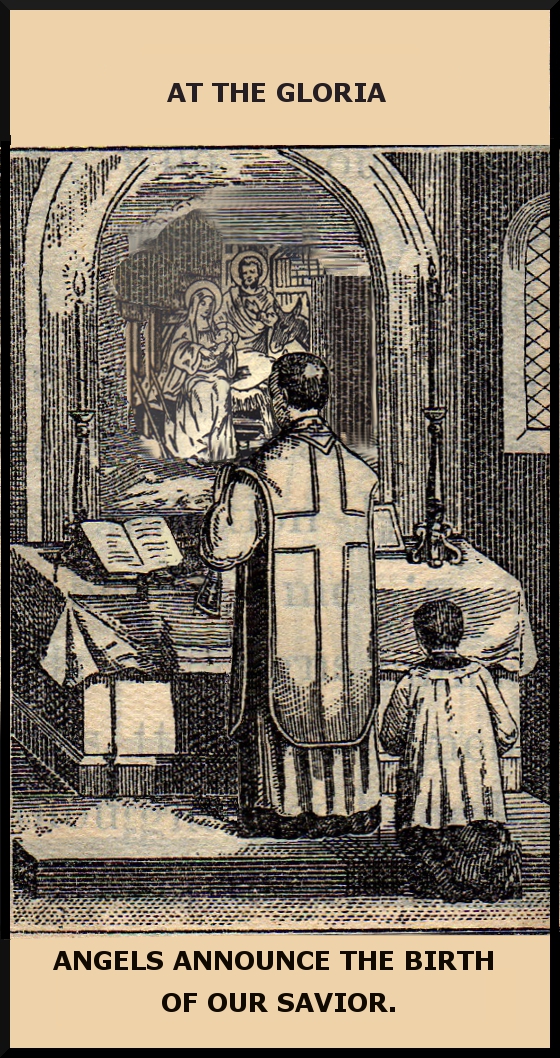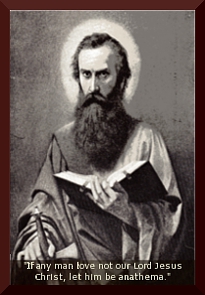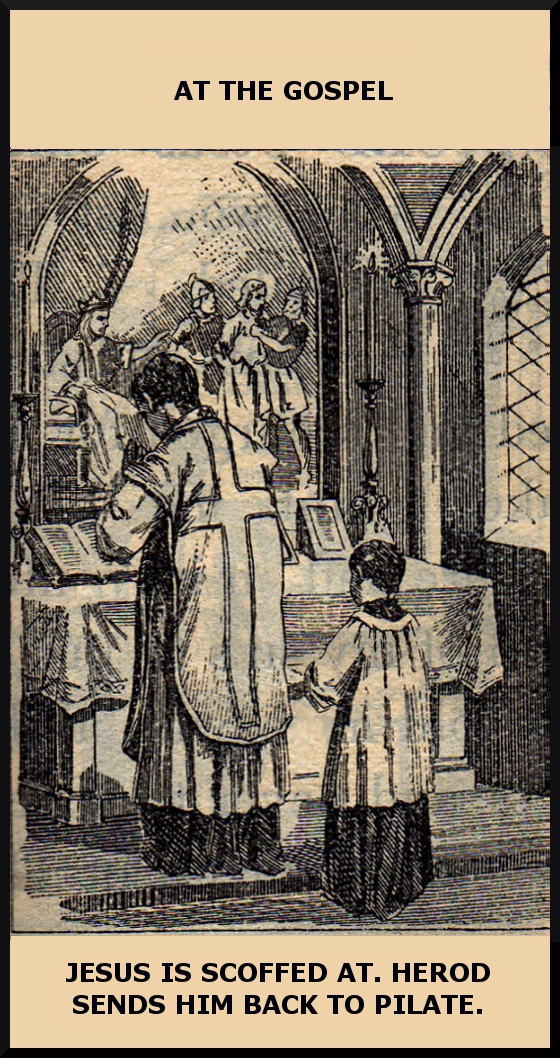 When seeing the altar boy remove the missal from the Epistle side to place it on the Gospel side, recall how Our Lord was shuffled to and fro between Herod and Pilate. Also consider the mystical significance of removing the missal: When the Chosen People of the Old Covenant rejected Jesus, the Good News of salvation was brought instead to the pagans, the Gentiles.
When seeing the altar boy remove the missal from the Epistle side to place it on the Gospel side, recall how Our Lord was shuffled to and fro between Herod and Pilate. Also consider the mystical significance of removing the missal: When the Chosen People of the Old Covenant rejected Jesus, the Good News of salvation was brought instead to the pagans, the Gentiles.
In the Gospels, our Lord teaches truths necessary for our salvation. Those truths do not depend on whether we accept them or not. In the economy of salvation, no grace is wasted. The gift of faith rejected by one, will be given to another.
Prayer: “Lord Jesus Christ, who wouldst be again sent back by Herod to Pilate, and by that means caused a reconciliation between them; grant me not to fear the designs of my enemies, but to profit in being persecuted by them, and to faithfully adhere to all Thy teachings. Amen.”
In the Novus Ordo, the readings are done from only one lectern so that it is impossible to see the theology conveyed by the shifting of the missal and the movement of the priest to the opposite side. Also, as Jacob Michael has demonstrated in his study of the readings for Sunday Masses, entire passages of Scripture were dropped from the N.O. Lectionary. He gives this example: “The New Lectionary does include the rather tame words of Our Lord in John 3:16, which affirms that ‘God so loved the world,’ but it cuts out these verses, which highlight the opposite side of the Gospel coin: ‘He who believes in the Son has eternal life; he who does not obey the Son shall not see life, but the wrath of God rests upon him.'”

